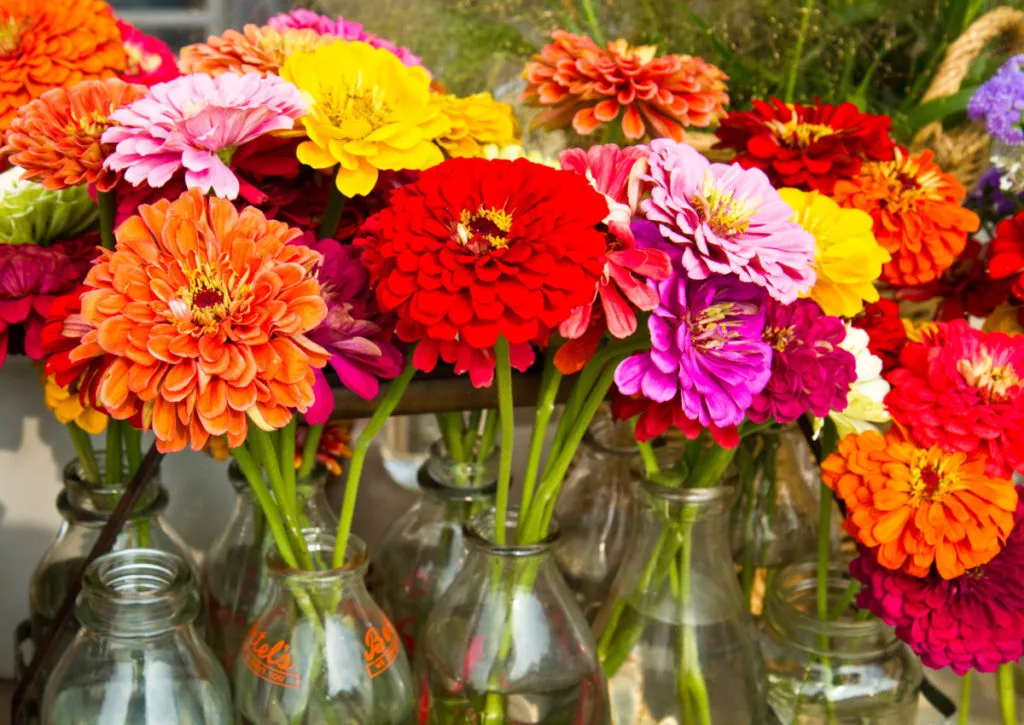
When it comes to making your living space fresh and inviting, it’s hard to find anything that does the job better than plants. And while I love the creeping tendrils of my philodendron and the fuzzy leaves of my many African violets, I enjoy bringing fresh-cut flowers into my home when it’s summertime.
My allergies usually have a different sentiment.
Whether you prefer a single gerbera daisy in a slim vase for a clean, Swedish minimalist look, or a mason jar overflowing with every kind of flower you can find in a meadow, nothing is cheerier than bringing a bit of the outdoors inside.
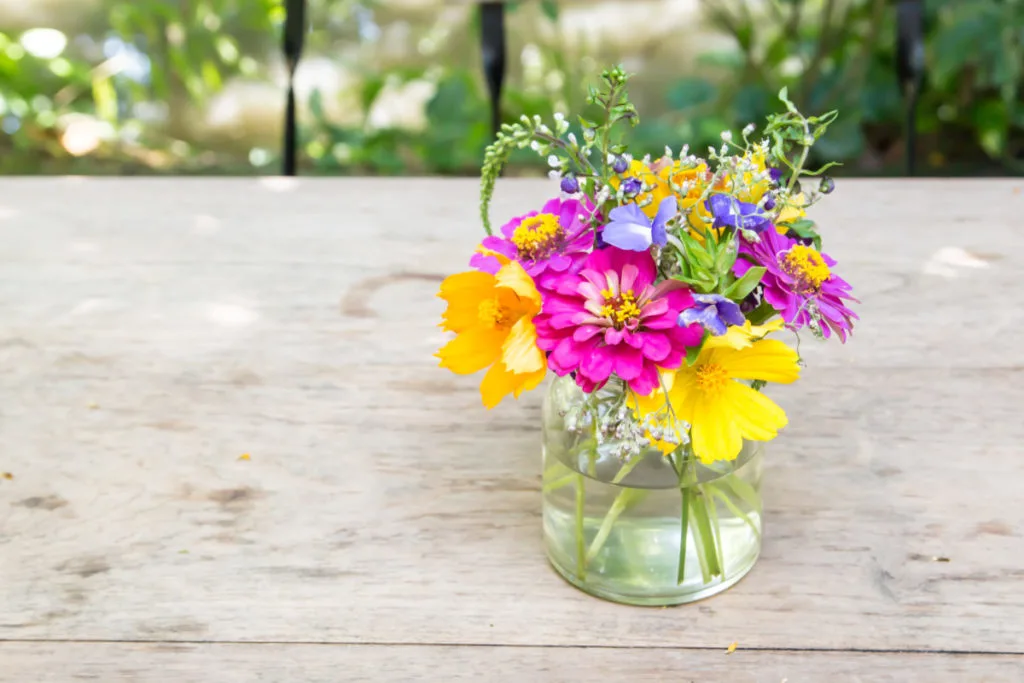
As a gardener, I’m always on the lookout for flowers that will provide the showy and sturdy blooms best suited for cut arrangements.
With that in mind, I’ve put together a list of quick-growing annuals that will provide you with plenty of lovely flowers to keep your vases full as long as the sun is shining.
7 Secrets To Cut-Flower Garden Success
Naturally, if you’re planning a cut-flower garden, there are a few factors you’ll want to keep in mind.
1. All Blooms, All the Time
Choose a mixture of flowers that offer a range of blooms from early spring right into fall. Planning a diverse spread over the entire growing season assures you’ll enjoy bouquets month after month, as opposed to being inundated with flowers for a few weeks and then back to nothing.
2. A Little Planning Goes a Long Way
When you’re choosing flowers, it’s important to pay attention to light requirements. Most annuals need around eight hours of sun a day. I know I’m guilty of grabbing lots of “Ooh, those are pretty!” flowers when I’m at my local nursery without checking sun requirements. It helps to have a walk around your property and note the light where you intend to plant before you head off to buy seeds or transplants.
3. The Grateful Deadhead
Once they begin to bloom, deadhead your flowers often. If you’re cutting them, this won’t be as much of an issue. However, it’s unlikely you’ll be using all of your flowers. If you’re quick to snap off spent blooms, your plants will continue to produce, giving you more bouquets.
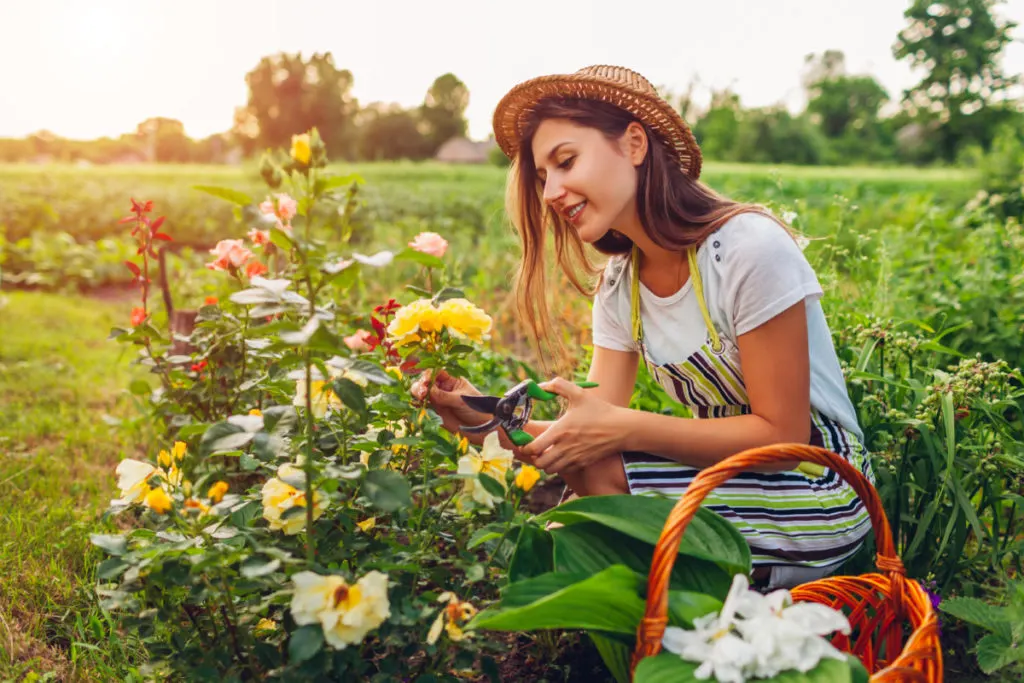
4. Cut-and-Come-Again, Not Just for Lettuces
In the same vein, look for cut-and-come-again varieties. Some flower varieties, such as zinnias and calendulas, will take your flower picking as a challenge and continue to push out new blooms throughout the growing season.
5. To Pot or Not to Pot
Nearly all of these plants do just as well in containers as they do in the garden. If you want to add some color to your deck or patio or you don’t have a yard, you don’t have to miss out on a cut flower garden.
6. Height Is Important
When choosing a specific cultivar, look for a variety that’s on the taller side, at least 12″ high. Flowers with longer stem heights allow for more creativity when making your arrangements. You can always trim them shorter to fit shorter vases.
7. Don’t Forget the Greens
You’ll want some lovely greens to break up the color and add textural appeal to your bouquets. Consider planting herbs like lemon balm and Italian parsley or other herbs with large, leafy fronds.
15 Beautiful Cut-Flower Annuals A to Z
1. Ageratum
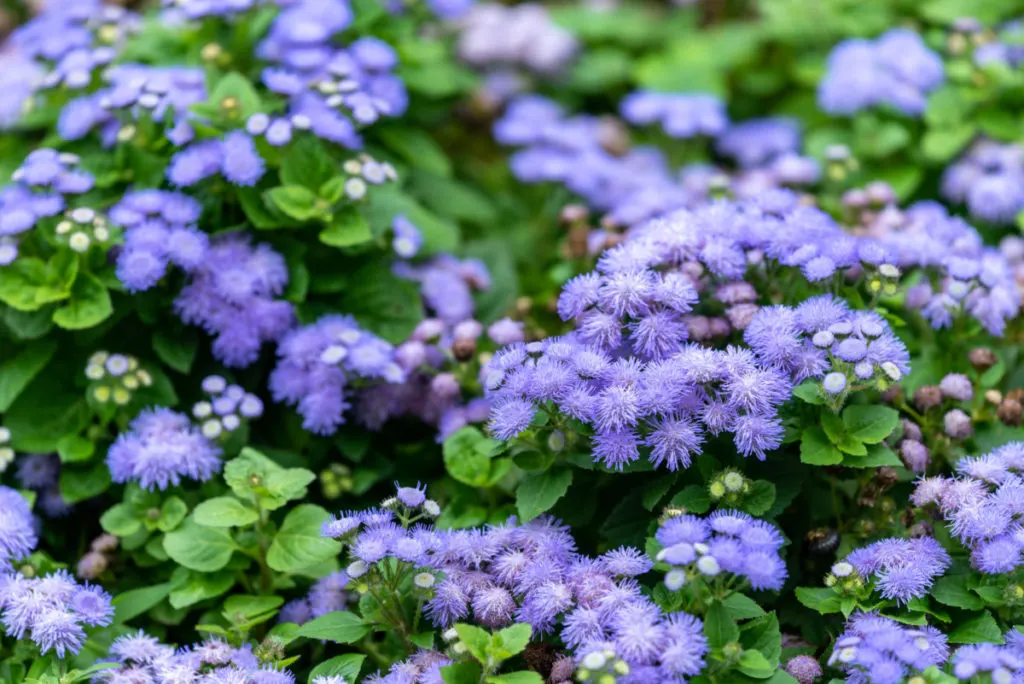
The ageratum comes in several lovely hues ranging from bright white, mauve, lavender and a lovely sky blue. Its flowers remind me of small pom-poms. While they prefer full-sun, ageratum can handle partial shade. This flower prefers well-drained soil and will bloom from mid-summer through the fall.
2. Bachelor’s Button/Cornflower
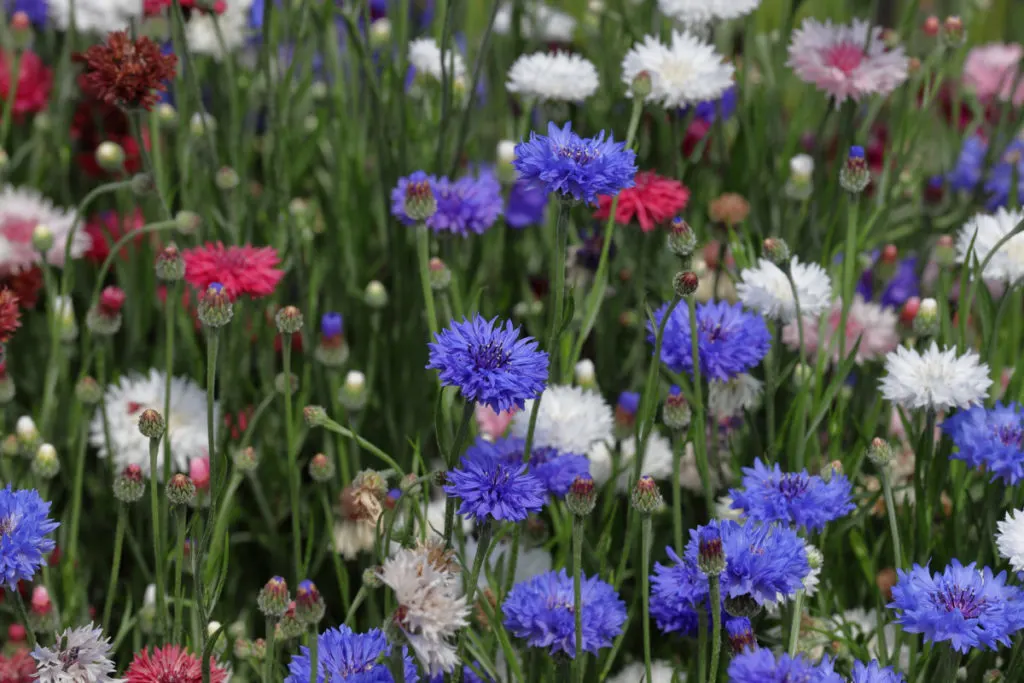
This is another popular annual that spans through the blue spectrum. Bachelor’s Button or Cornflower can have white, pink, lavender or blue petals. These are an excellent choice for your cut flower garden, as they can grow up to two feet tall. This is another sun-loving flower that likes moist, well-draining soil.
3. Bells of Ireland
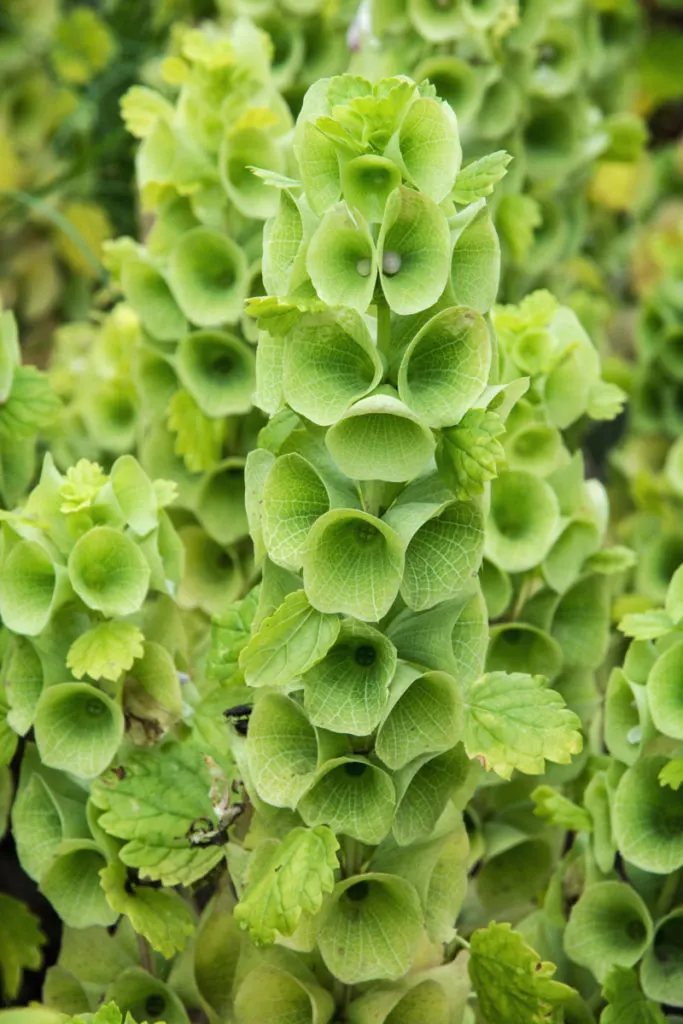
These gorgeous flowers can double for greenery. Their minty scent mixes nicely with the perfume of other flowers. Add these to the back of your garden for height, and cut them when the bells are firm to add to arrangements. Full-sun, but will tolerate partial shade, and again, Bells of Ireland require well-draining soil.
4. Calendula
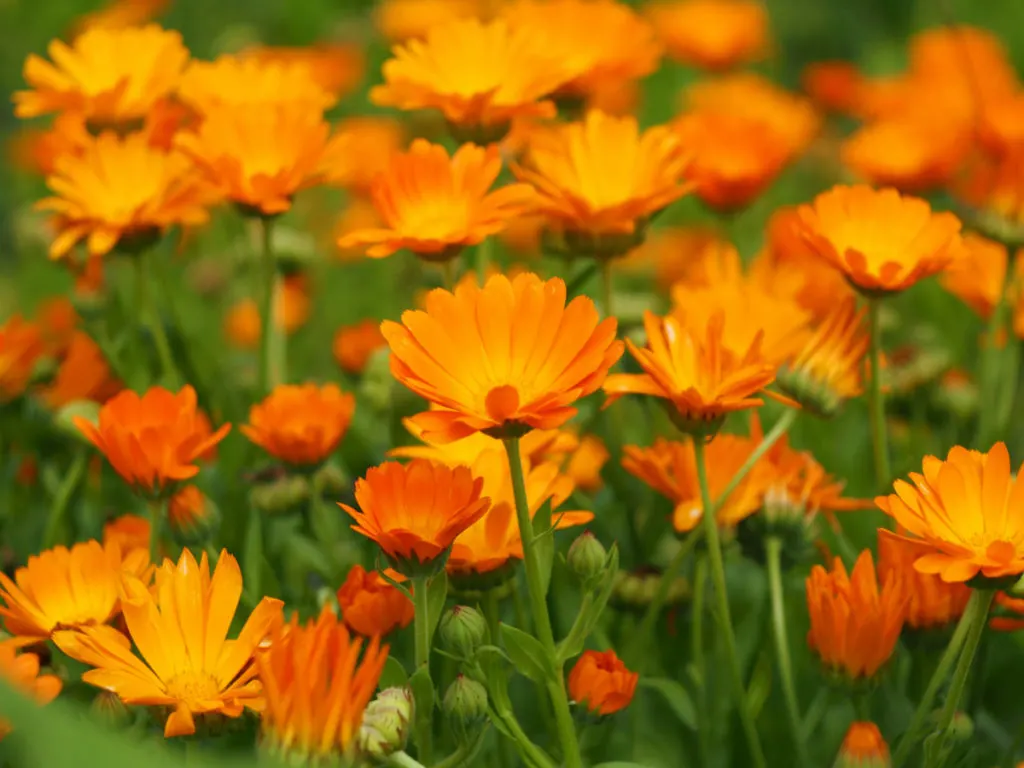
Despite their beauty, Calendulas are a garden workhorse. Not only are they an exceptionally beautiful flower, but the petals can also be eaten or made into a host of wonderful tonics and balms for the skin. These cut-and-come-again flowers are technically a perennial, but as they can’t take a hard frost, they are generally treated as an annual. Choose a well-draining location with plenty of sun for your calendulas.
5. Cosmos
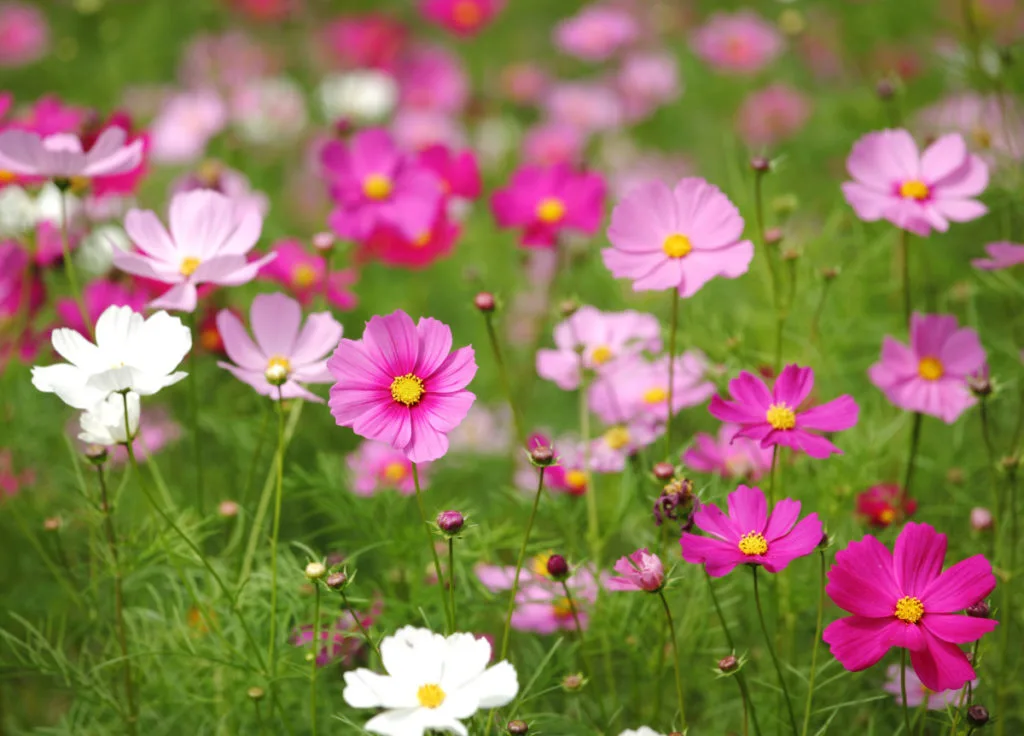
I love how delicate cosmos are; their airy petals and bright pinks and whites look lovely surrounded by fresh greens. Grow cosmos for flower arranging and also enjoy the host of pollinators and even hummingbirds that will show up in your yard. These flowers, unsurprisingly, prefer full sun and well-draining soil. Their lovely green foliage can also be used in arrangements.
6. Dianthus (Pinks)
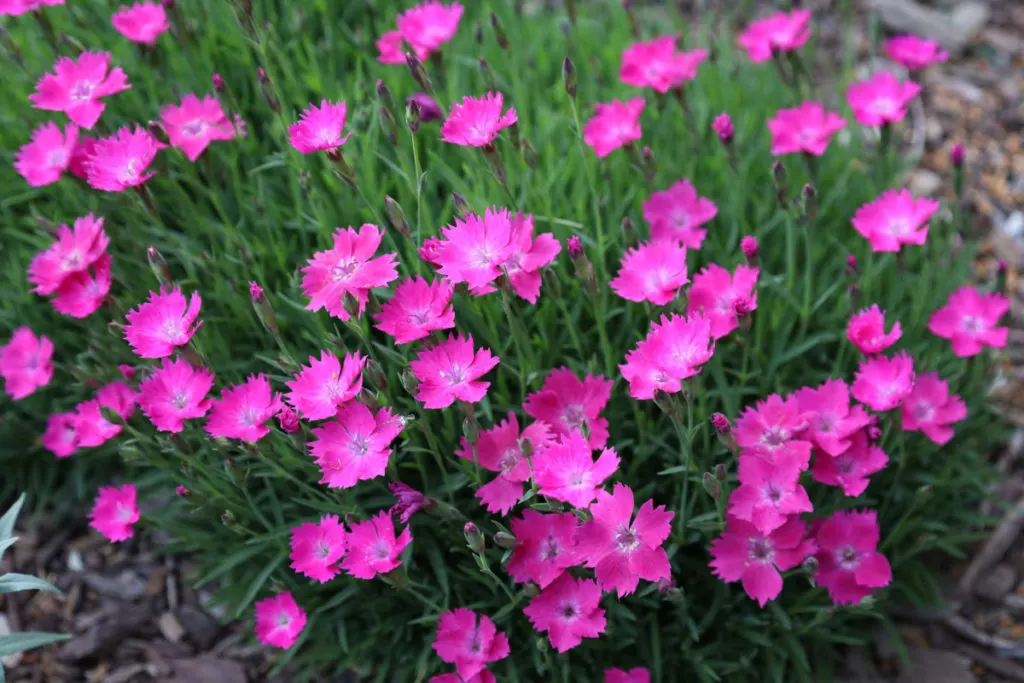
Dianthus, also known as pinks, make a fantastic flower for bouquets due to their sturdy and slim stems. They come in various colors – orange, yellow, pink, white, red, variegated; they truly offer a rainbow of options. This is another flower where the gray-green foliage makes a lovely focal point in arrangements. Grow dianthus in full or partial sun to enjoy their lovely fragrance. They are generally resistant to deer and rabbits too.
7. Globe Amaranth
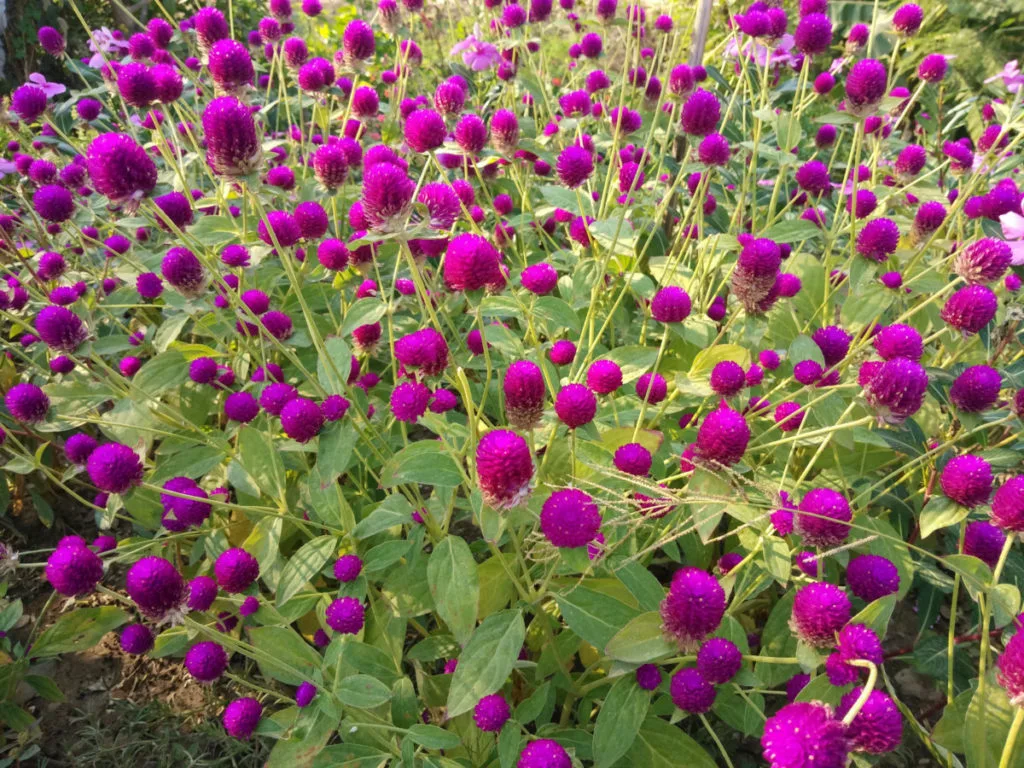
Globe amaranth is a great option if you don’t have the best soil, as they’re quite happy to grow nearly anywhere. Their lovely shape and interesting texture make them a unique addition to your floral arrangements. Globe amaranth come in a host of berry colors. If you’re starting them from seed, it helps to soak the seeds for 48 hours before planting. This delightful plant is also wonderful for dried arrangements as it holds its shape and color well.
8. Larkspur
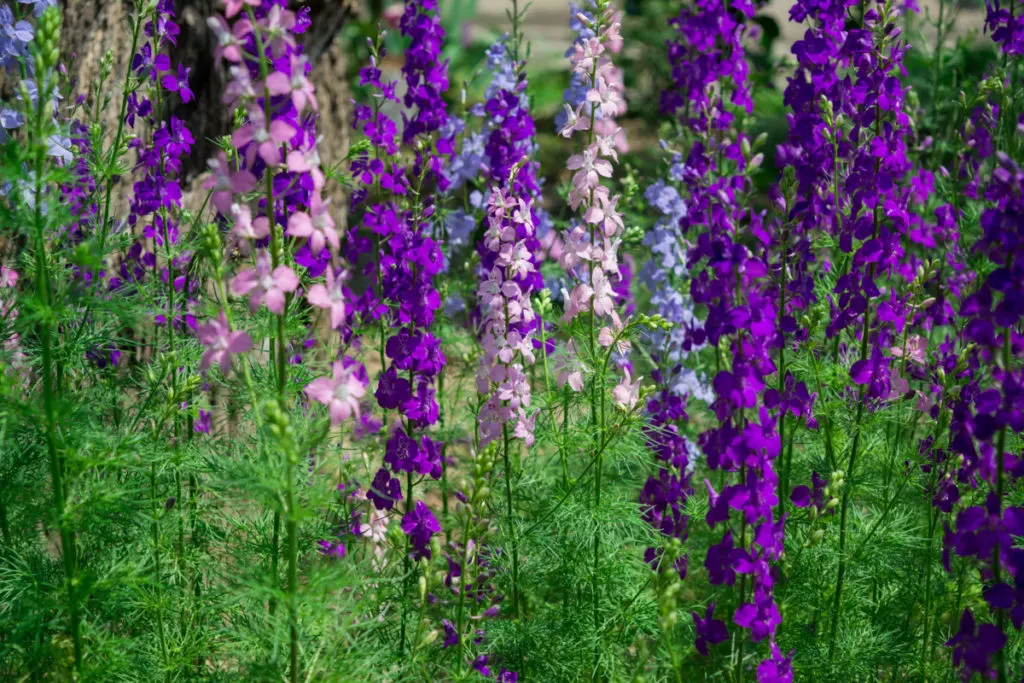
Getting back into the blues, add larkspur to your garden for dramatic tall stalks of blue, lavender or white flowers. These look incredible in larger arrangements, as they can grow up to four feet tall. Plant these in full sun where they won’t shade out smaller blossoms. They prefer well-draining soil.
9. Marigolds
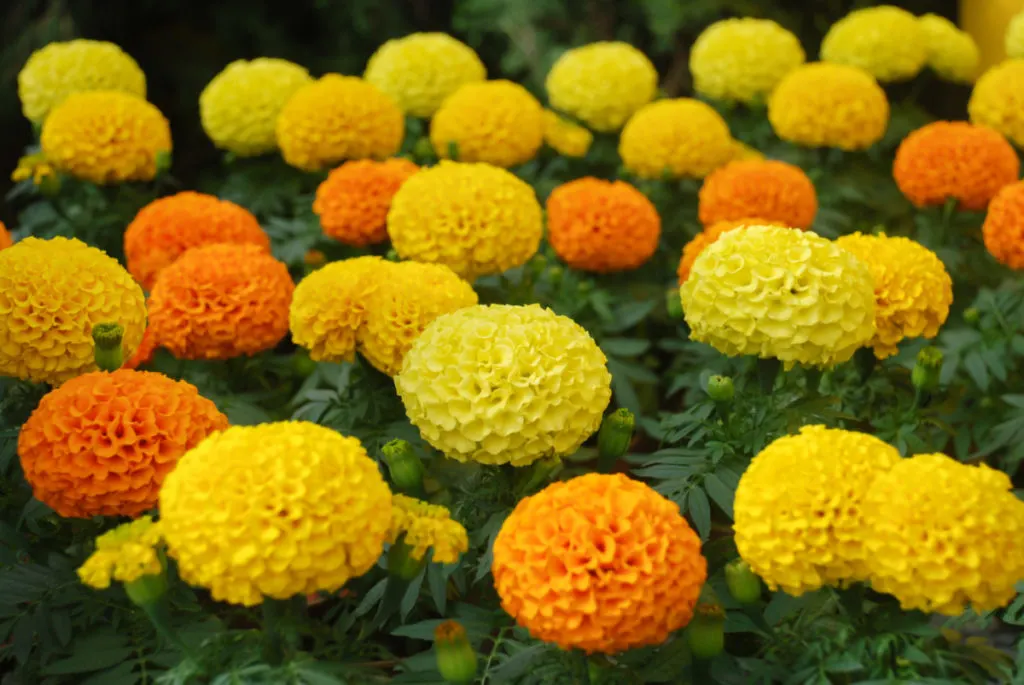
I have a special fondness for these humble flowers that pop up in nearly everyone’s grandmothers’ flower beds. They’re so easy to grow; I rarely bother with transplants and save seeds each year to pop in the ground in the spring.
If you’re looking for flowers in the yellow, orange and red family, marigolds are the way to go. If you want delicately petaled French marigolds or large heads of flowers, there are plenty of varieties to choose from.
Marigolds are another flower that will grow in nearly any kind of soil. Full sun to partial sun. And don’t forget to save a few to go in the garden as a companion plant.
10. Ornamental Kale
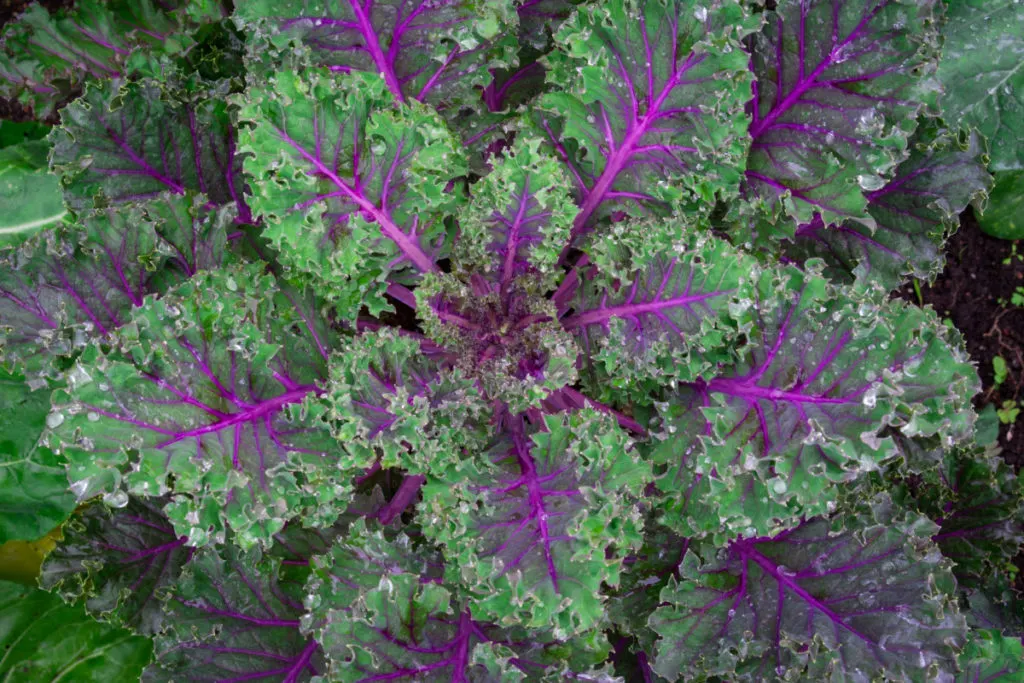
Use the leaves of ornamental kale as greenery with deep greens, dark purples and to add textural interest to your arrangments. Look for varieties with long leaves for the best effect. And of course, don’t forget to eat them too. Most kale is cold hardy, and can be planted in the early spring and will often grow well into cold weather.
11. Poppies
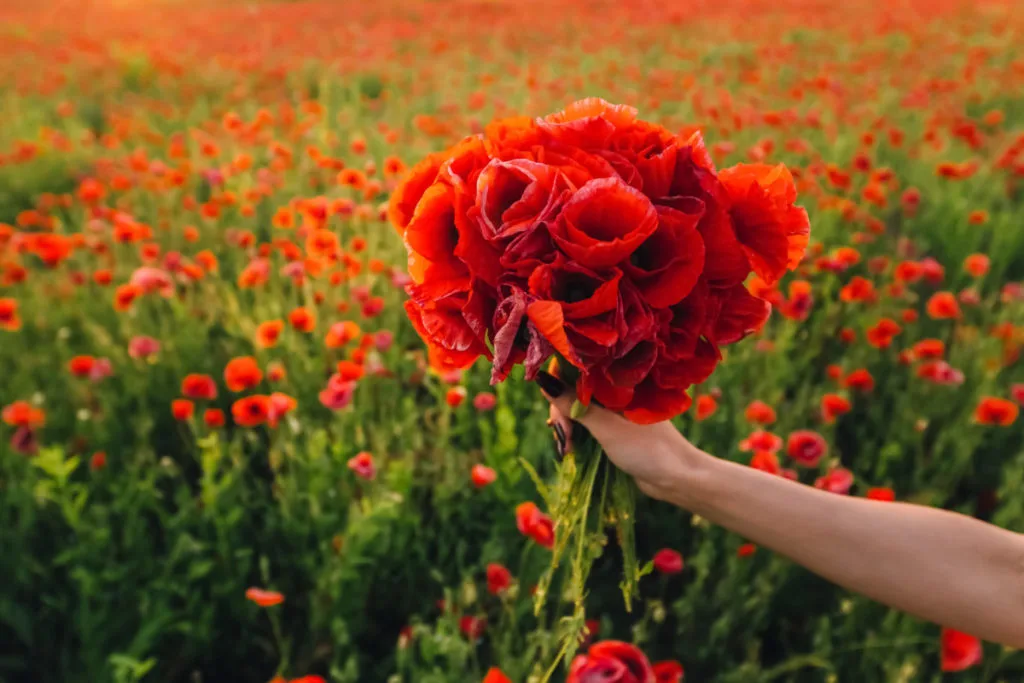
Not only do these showy blooms look incredible in cut flower arrangements, but their seed pods also add visual appeal to bouquets. Choose a variety that produces poppy seeds too, and your poppies will be more than just garden eye candy.
Cheryl will walk you through growing breadseed poppies. Poppies begin blooming in late spring, making them a great choice for an early flower.
12. Snapdragon
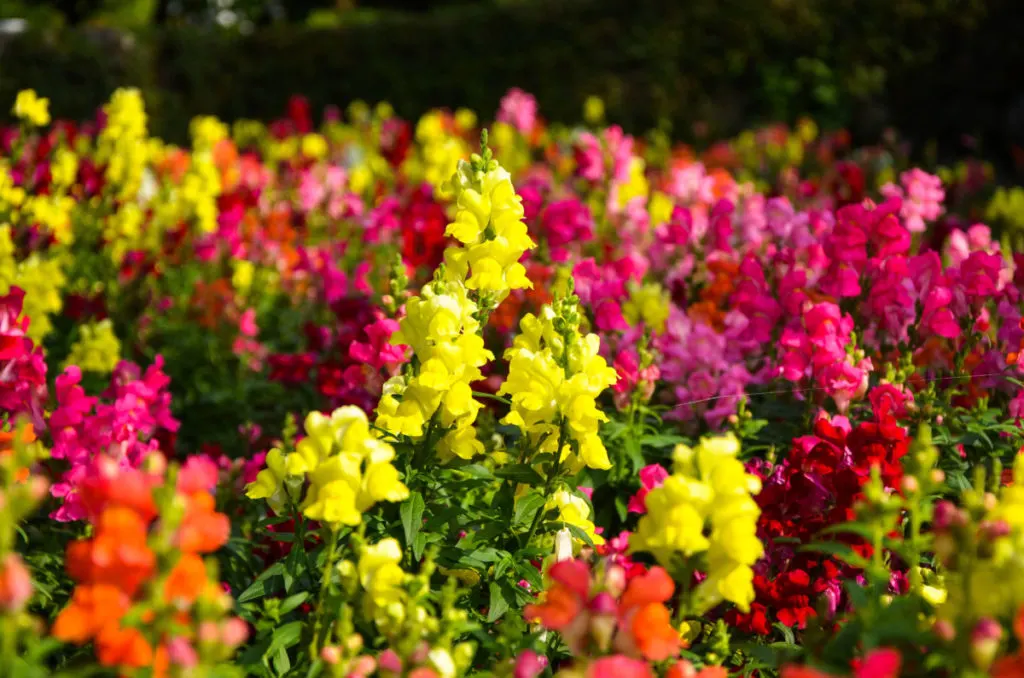
Snapdragons are another stalk flower that offers a huge variety of colors and patterns. Pick them when the individual flowers have opened. They prefer full sun and well-draining soil. Despite their delicate looks, they are pretty hardy. All last year I had one growing up through the cracks of the sidewalk outside my door. It took several frosts to do it in finally.
13. Sweet Peas
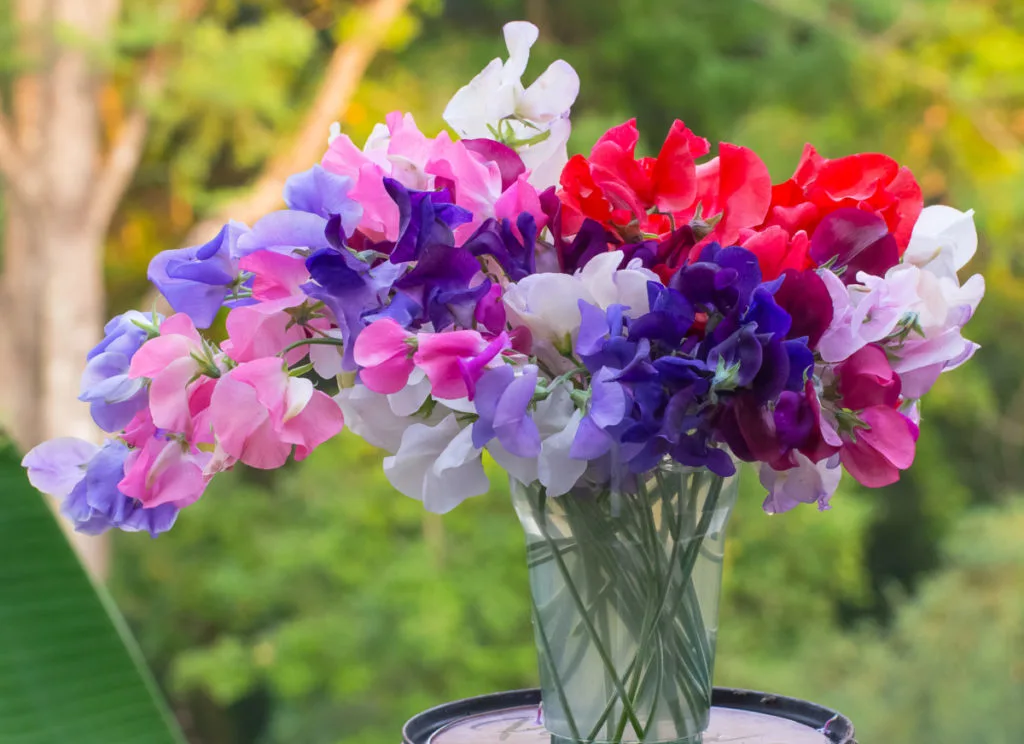
These full sun-loving delicate flowers are a lovely spring addition to your cut flower garden. Many grow as vines, so be sure to plan to give them a space to climb. They come in a lovely selection of soft blues and purples, creamy whites and shell pinks.
As well as being a great cut flower, butterfly sweet peas are used to make a gorgeous simple syrup. The color is a deep inky blue, which turns purple when you add an acid such as citrus.
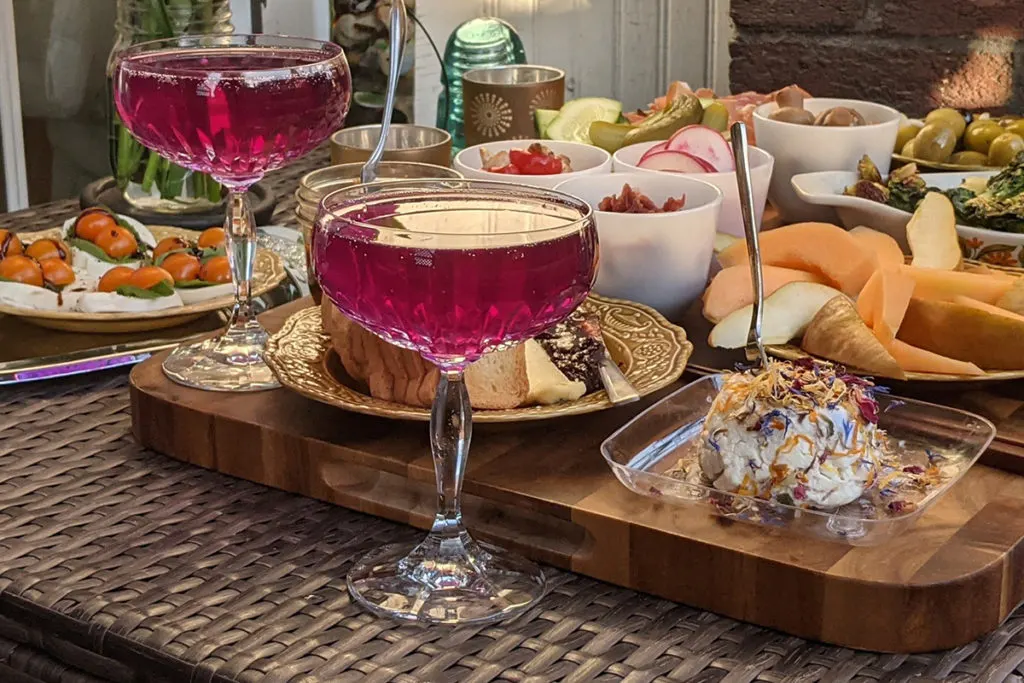
14. Sunflowers
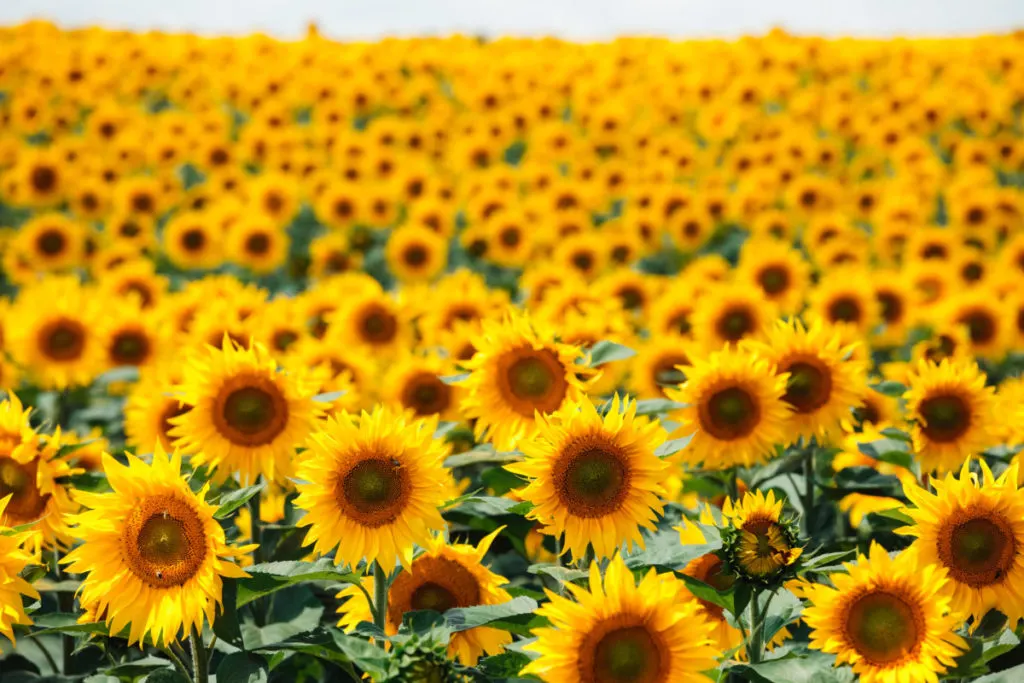
Sunflowers are notoriously easy to grow, so long as they get plenty of sun. Aside from your standard yellow petaled sunflower with the classic dark brown center, they come in many flame-colored hues. When choosing a variety, be sure you check how tall they grow, as some can get up to twelve feet tall!
15. Zinnias
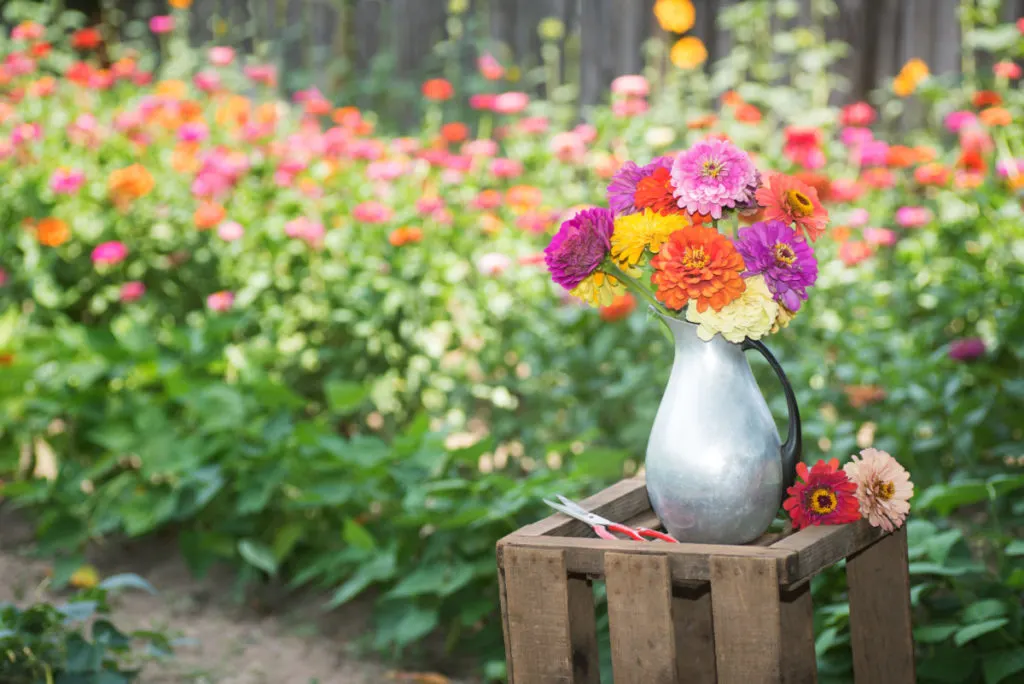
As it just so happens, my favorite on this list is the very last – zinnias. There is just something wonderfully fun about these flowers. They’re so cheerful and come in the most amazing colors and varieties, including striped petals. And they grow quickly too. Give them full sun and moist but well-draining soil to enjoy these cut and come again flowers all season long.
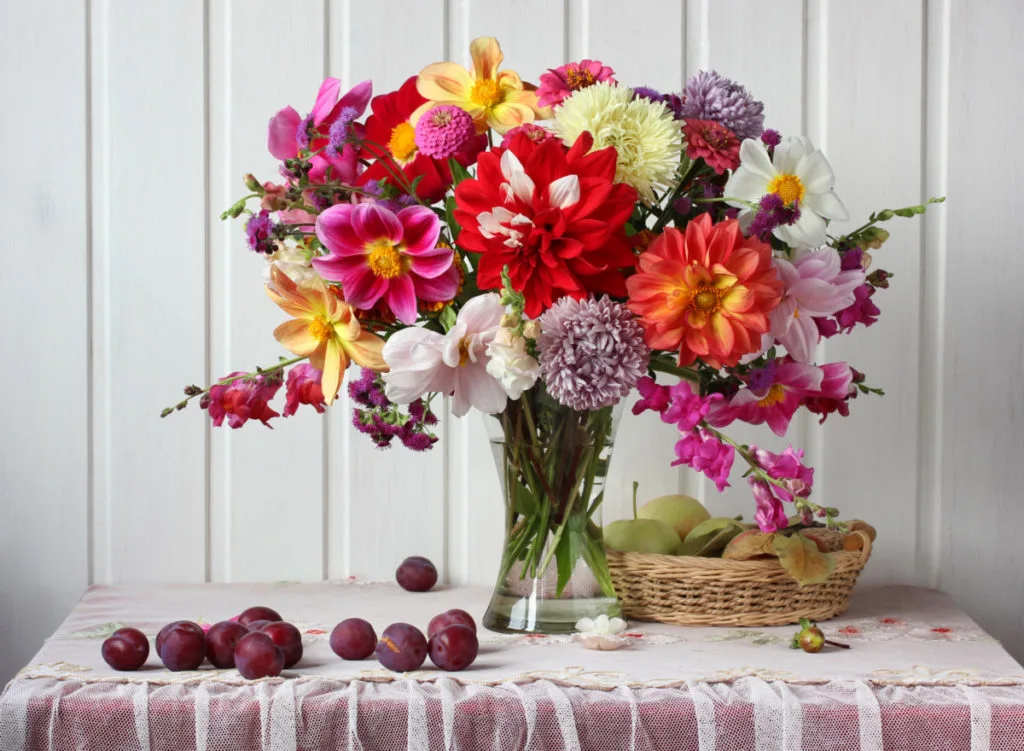
With all of these options, you’ll have plenty of gorgeous bouquets gracing your coffee table all season long. Store-bought flowers? Who needs ’em.

Get the famous Rural Sprout newsletter delivered to your inbox.
Including Sunday ramblings from our editor, Tracey, as well as “What’s Up Wednesday” our roundup of what’s in season and new article updates and alerts.

